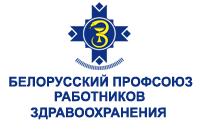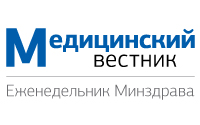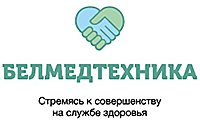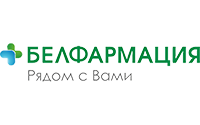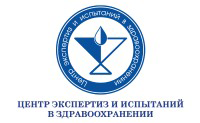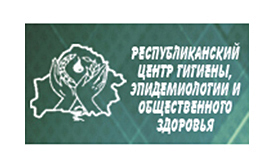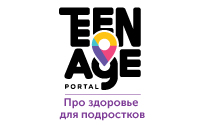
Medical Rehabilitation System in Belarus

Medical rehabilitation is a process aimed at restoring and compensating the functional capabilities of a patient's body impaired due to a congenital defect, a disease or a trauma through medical and other methods.
The main goal of medical rehabilitation is to prevent disability, to help patients recover and extend their life, to integrate them into the society and ensure an acceptable quality of life. The maximum goal is to help a patient be able to live independently, while the minimum goal is to improve a patient's capabilities to self-help.
Rehabilitation is not just about medical science
In order to return a person back to the fullest life possible, a whole range of measures is required. Each patient has an individual rehabilitation program prepared exclusively for them.
Specialists assess the functional disorders that limit a patient's abilities (such as the ability to move, communicate, find their bearings, etc.). A rehabilitation therapist needs not only the clinical diagnosis, but the clinical and functional diagnosis as well. It provides information about any functional disorders present, as well as about their intensity, nature of the disease and whether it's possible to compensate them with medicinal, technical or other means.
What makes up rehabilitation?
1. Psychological assessment and correction. More than 50% of patients who have suffered a myocardial infarction or a stroke experience depression, not to mention those battling cancer. Patients may think that their life is over, that they will inevitably lose their job, their family and the life they are accustomed to. But in most cases, by putting in effort at the right time you can find ways not to be left out of social life.
2. Physical methods of rehabilitation: physiotherapeutic procedures, massage, balneotherapy, etc.Modern methods of rehabilitation involve using simulators with biological feedback and computer technologies to assist doctors and patients. For example, to improve paretic arm performance after a stroke, a patient will need to train the arm in a computer game (for example, grinding a carrot displayed on the monitor). Robotic simulators are also effective. A patient is placed inside a simulator, and the robot helps him learn how to walk and develop their arm and leg movements. There are a lot of new techniques to improve speech. Speech therapists and phoniatrists help patients learn to speak anew.
3. Drug treatment. While during treatment injections, IV lines and pills are most important, in rehabilitation medicinal products are used as auxiliary supportive means.
4. Equipment for rehabilitation. It is important to provide the disabled people, and the elderly in general, with additional assistance at home, such as installing special equipment in their flats: handrails, seats, etc. A range of facilities such as wheelchairs, canes, crutches, walkers, handrails, dentures, etc. are offered at reduced prices.
The medical rehabilitation system in Belarus is represented by 326 specialized medical rehabilitation departments, 96 of which provide in-patients and 230 ’┐Į outpatient care. There are more than 4,000 beds for adults and children. Belarus has a stage-by-stage system of medical rehabilitation.
Stages of medical rehabilitation:
Stage 1. Treatment and rehabilitation.
It is carried out during the acute stage of a disease or an injury. It starts quite early when the patient is still in the specialized hospital unit or already at the intensive care unit. Prevention of congestive pneumonia, bedsores and contractures are also part of rehabilitation.
Stage 2. Early in-patient medical rehabilitation.
It is carried out during the acute and early recovery period at in-patient early rehabilitation units.
The following republican institutions provide such rehabilitation services:
- Republican Clinical Hospital for Medical Rehabilitation (Asakovshchina);
- Republican Research and Practice Centre for Medical Expert Review and Rehabilitation (Gorodishche);
- Republican Children's Hospital for Medical Rehabilitation (Ostroshitsky Gorodok);
- Republican Children's Centre for Medical Rehabilitation (Borovoe);
- Republican Hospital for Medical Rehabilitation and Balneotherapy (Minsk).
Each capital city of the regions has multi-profile medical rehabilitation centres with an average of 200 beds. As for the health care organizations in Minsk, such services are provided by the City Centre for Medical Rehabilitation based at Clinical Hospital No. 11.
Stage 3. Out-patient care.
It is provided at rehabilitation health care facilities (in their absence ’┐Į at specialized outpatient facilities). Many polyclinics have medical rehabilitation units or at least medical rehabilitation rooms. A rehabilitation therapist (or medical specialist) assesses indications and contraindications. Qualified personnel will help the patient to further remove motor, speech and other impairments within an individual rehabilitation programme.
Stage 4. At home.
In the first place, it is most important for two categories of patients:
- First, those who cannot move or have difficulty moving around the flat. In this case, it is important to teach their relatives to look after them and tell them about what a patient may and must not do, how to lift them, make them seated, how to feed them, etc. There are such concepts as "school for the patient", as well as "school for the patient's relatives".
- Secondly, these are people suffering from light and moderate consequences of diseases and injuries. Doctors at the polyclinic will give them recommendations and tasks to work on at home.
Stage 5. Later (repeated) in-patient medical rehabilitation.
It is prescribed for patients during the later recovery period, during the period of the disease consequences, in cases when the recovery takes place but requires intensive rehabilitation care at the in-patient unit to be successful.
What are the benefits of the stage-by-stage system of rehabilitation?
1. The patient is constantly followed up by doctors and receives qualified help for their rehabilitation.
2. Moral aspect. The patient sees that they are looked after and cared about, which is very important for their social integration.
The effect of knowing that people care about you is tremendous. Even patients with severe diseases demonstrate progress in their rehabilitation. For example, bed-bound patients may sit, get up, go to the toilet and eat without assistance. This is a huge relief for the whole family.
If the after-effects of a disease are less severe, medical staff tends to the patient until they are able to take care of themselves, move without assistance, return to work (even if in a sphere or a profession different from their previous one).
The total rehabilitation rate increased over the last ten years. While in 2007 it was 6.8%, in 2017 it was already 9.6%. Over the same period the partial rehabilitation rate increased from 11.5% to 14.3%.
Who needs rehabilitation?
Order of the Ministry of Health No. 1 300 d/d 10.12.2014 "On the Procedure of Medical Rehabilitation at Outpatient, Inpatient and Day Care Facilities, as well as Outside Health Care Organizations" clearly defines the medical indications and contraindications for a patient to be referred to various medical rehabilitation stages and sets out the time frame for transferring a patient who is recovering from a severe disease or injury to an in-patient rehabilitation unit.
Rehabilitation services are available to all adults and children whose lives are affected by the after-effects of a disease or an injury due to an impaired function of an organ or an organ system, such as impairment of:
- ability to tend to their needs independently;
- ability to move without assistance;
- ability to find their bearings;
- ability to communicate;
- ability to control their behaviour;
- ability to learn;
- ability to perform the leading activity according to their age (only for children).




